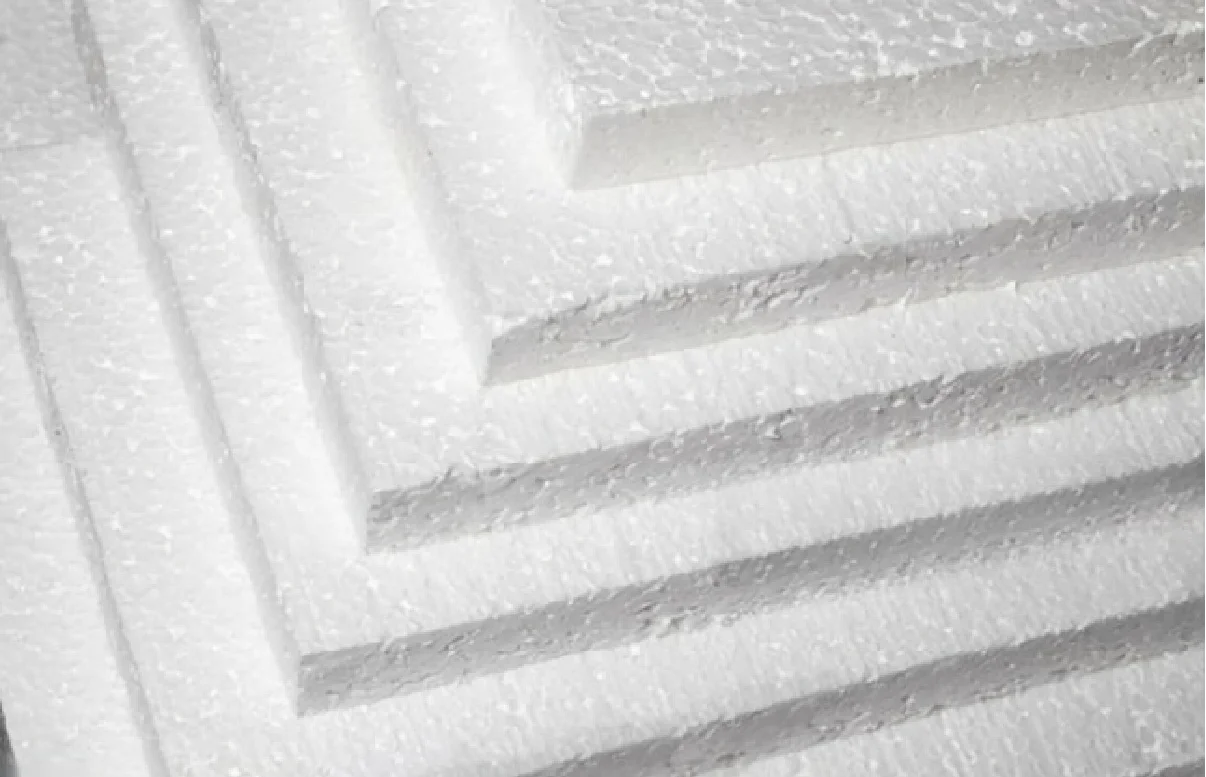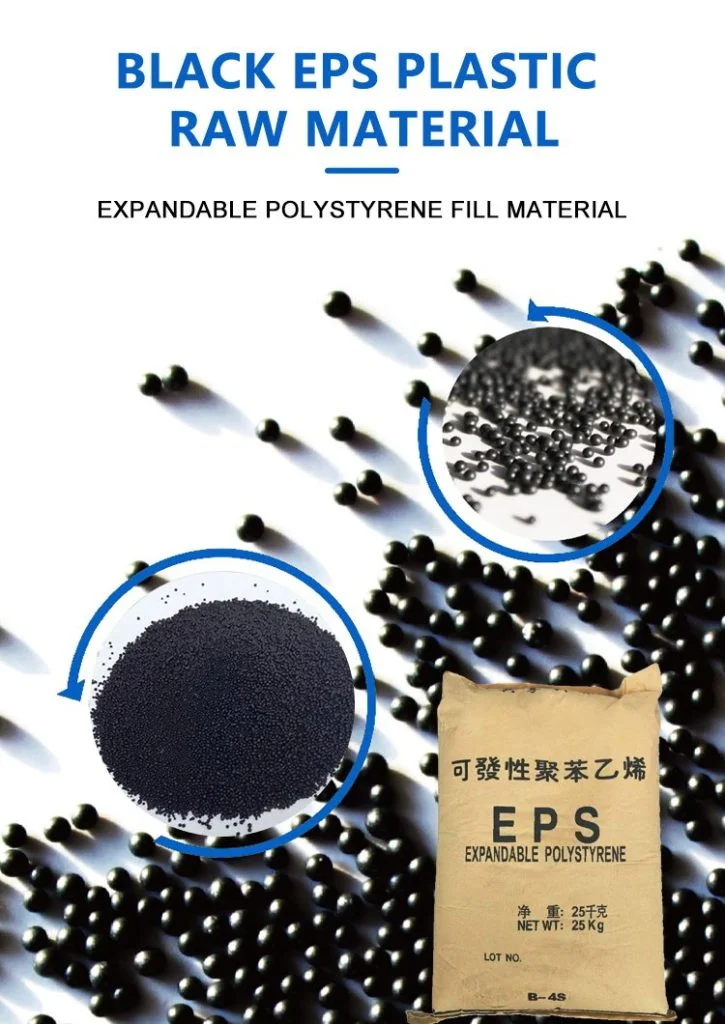Expanded Polystyrene (EPS) is a versatile material widely recognized for its exceptional thermal insulation and protective capabilities. Its unique structure enables it to excel in applications ranging from building insulation to secure packaging. To understand its effectiveness, we first explore the structural composition of EPS and how it contributes to its performance.

The Structural Composition of EPS Material
Expanded Polystyrene (EPS) is composed of a network of tiny, sealed air pockets encapsulated within spherical polystyrene beads, resembling a cluster of miniature balloons. These air-filled chambers are the cornerstone of EPS’s exceptional thermal insulation properties. The trapped air, a poor conductor of heat, acts as a barrier, effectively resisting the transfer of thermal energy. This unique structure not only makes EPS lightweight and buoyant, allowing it to float like a leaf, but also provides resilience under pressure. As a result, EPS is widely used for thermal insulation in buildings and protective packaging for fragile items. This distinctive composition underpins EPS’s outstanding performance in insulation and protection.
EPS repels water with the ease of a swan gliding over a pond, thanks to its tightly sealed air pockets. This keeps it performing with unwavering charm, even in soggy nooks. By staying dry, it clings to its insulating wizardry. This is a triumph for walls or roofs braving rain or humidity over time. The locked-tight bubbles serve as an impervious barrier, ensuring EPS remains a steadfast guardian.
How Does EPS Insulation Manage Thermal Conductivity?
EPS corrals heat with a clever ruse. Heat attempts to slink through the polystyrene walls and the air nestled within. But air, a sluggish courier of warmth, dawdles like a reluctant messenger, slowing heat’s progress. The sealed pockets also halt air’s restless dance, stifling heat’s sneaky maneuvers. What’s more, EPS deflects radiant heat like a shield, ensuring temperatures stay steady and serene.
To grasp this further, let’s uncover the ways heat tries to breach EPS.
The Mechanisms Behind Heat Transfer in EPS
Heat creeps through EPS mainly by conduction, tiptoeing along the polystyrene walls and the tranquil air within. Air, a lethargic heat carrier, wraps warmth like a soft quilt, keeping it in place. The sealed pockets also quell air’s twirling, halting convection’s advance. They even mute the shimmer of heat rays. Together, these tactics crown EPS a formidable champion for insulating homes and structures.
The influence of material density on thermal conductivity
A denser EPS packs more polystyrene into each chunk, like a fortified wall against heat’s advance. This slows the heat’s relentless march. But if it grows too heavy, the air’s share dwindles, slightly dimming the insulation’s magic. It’s a delicate dance—beyond a certain heft, added weight yields little gain as the air’s charm fades.
The influence of temperature fluctuations on thermal performance
Heat can slip through EPS a bit swifter when temperatures soar, as polystyrene molecules jiggle with newfound energy. Yet, in typical building climates, this shift is as faint as a murmur. EPS remains a radiant star, keeping homes cozy in winter’s chill or cool in summer’s blaze, undaunted by weather’s whims.
Can EPS Maintain Dimensional Stability?
EPS stands resolute, holding its form like a steadfast oak through swings of heat and cold. Its minimal expansion rate acts as a quiet anchor, resisting stretching or shrinking. This makes it a trusty ally for spaces needing insulation to endure for years, like walls or rooftops.
When EPS faces cycles of scorching heat and biting cold, it stands firm like a seasoned warrior. Its structure resists warping or twisting. The low expansion rate keeps it as steady as a mountain. This resilience makes Expanded Polystyrene a prime choice for enduring insulation in buildings.
EPS is a formidable contender when pressed. Densities above 20 kg/m³ are robust enough for most construction challenges. They bear heavy burdens without crumbling, all while retaining their insulating spark. This makes EPS a reliable partner for projects craving both strength and warmth.
Which Environmental Factors Impact EPS Insulation Efficiency?
Elements like water, sunlight, and air can test EPS’s endurance. Its sealed bubble design stands tall against most adversaries, but some demand extra care to keep EPS gleaming.
How Do Humidity and Water Absorption Affect Performance?
EPS typically shrugs off water like a rain-slicked feather, thanks to its sealed bubbles. But prolonged soaking might let tiny droplets seep through cut edges or gaps, faintly dimming its insulating glow. Coating or laminating panels serves as a sturdy raincoat, especially in damp havens like basements.
What Are the Effects of UV Exposure and Weathering on EPS?
Sunlight can gradually wear EPS down, with UV rays nibbling at its surface like persistent pests. For outdoor use, EPS needs a protective mantle or coating. These defenses shield it from the weather’s relentless wear, ensuring it endures longer.
How Is Fire Resistance Achieved in EPS Products?
To bolster EPS against flames, manufacturers infuse flame-retardant chemicals into the beads during crafting. For demanding tasks, Graphite Flame Retardant Grade – FGH-N-HBCD+ shines brightly. It meets stringent fire safety standards while preserving insulation’s might, making it ideal for buildings where fire protection reigns supreme.

What Strategies Can Optimize Thermal Insulation Using EPS?
Clever tactics can elevate EPS’s performance, making it shine brighter and endure longer, even in harsh conditions. These layers repel water and damage, safeguarding the core insulation. This is especially vital in soggy or rugged spots, like below-ground walls. To make EPS dazzle in buildings, pair it with vapor barriers and snug seals. This thwarts heat’s escape through crevices. Done right, EPS helps structures save energy and even earn eco-friendly accolades like LEED Gold, as seen in projects using B1 flame-retardant particles.
Which Standards Govern the Use of EPS Insulation Globally?
EPS is guided by rigorous rules to ensure it’s safe and effective. These standards scrutinize its strength, water resistance, and heat-blocking powers, keeping it primed for action.
Regulations like EN 13163 in Europe and ASTM C578 in the USA set the stage for EPS. They test its resilience, water absorption, and heat-stopping ability, ensuring EPS is ready for the challenge. Tests like ASTM C518 gauge heat flow through EPS with a specialized hot plate. ISO 2896 checks water absorption, and ISO 844 tests strength under pressure. These trials prove EPS is fit for real-world demands.
Building codes demand EPS to resist fire, endure weight, and manage moisture. They also value recyclability. Advanced types like Graphite Flame Retardant Grade – FGH-N-HBCD+ excel in these stringent standards, making them ideal for serious projects.
HUASHENG: A Leader in EPS Innovation
For those seeking a company that blends excellence with earth-friendly ideals, HUASHENG stands proud. Their Expanded Polystyrene keeps homes cozy year-round while curbing energy use. With bold ingenuity and a green spirit, they blaze a trail in insulation materials worldwide.
FAQ
Q: Can I use standard-grade EPS for below-ground insulation?
A: Standard-grade EPS may hold its own briefly. But for damp realms like basements, coated or laminated versions are the true champions. They repel water with gusto, ensuring insulation remains robust.
Q: How does recycled content affect the performance of EPS?
A: High-quality recycled EPS performs nearly as splendidly as fresh material. Clever recycling keeps it sturdy and dependable, so it insulates with dreamlike efficiency.
Q: Is flame-retardant treated EPS safe for indoor use?
A: Yes, flame-retardant EPS passes rigorous safety tests. It releases no harmful substances when properly installed in walls, making it a secure choice for indoor spaces.






